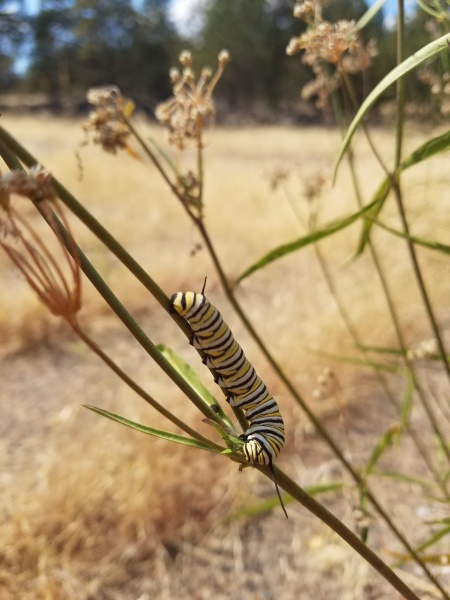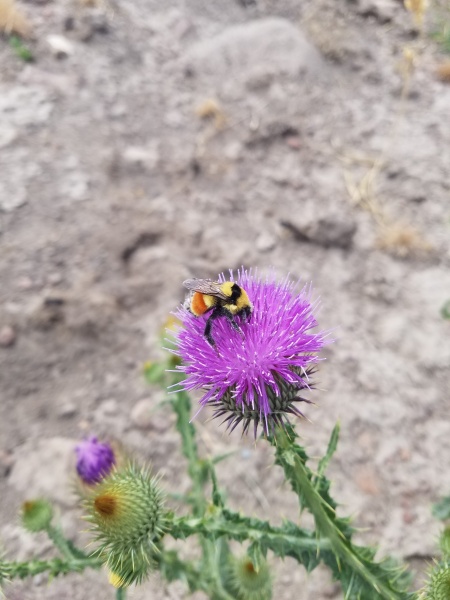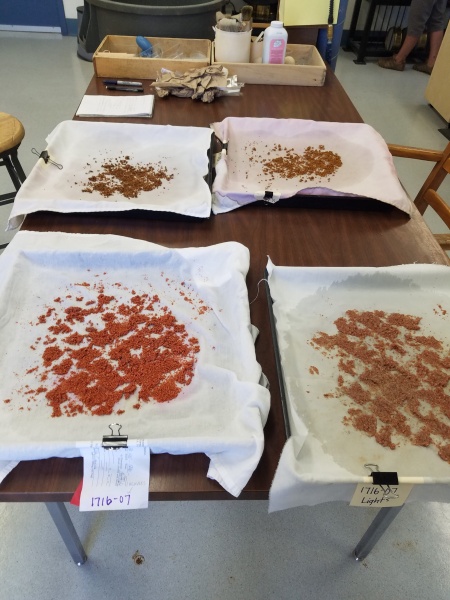As September rolls in the field season is starting to roll out. We still have some work to do in the field, mostly range tasks. This includes checking on range improvement projects and utilization. Range improvement projects are things like troughs, cattle guards, and exclosures. We drive out to them and evaluate how successful they are. For example we check to make sure the cattle guard hasn’t filled in with dirt, which would allow the cattle to cross it. This has involved a lot of driving through a lot of new country. This can be challenging because a lot of the BLM roads are either not marked or not in great condition. Some days were more successful than others. Utilization involves looking at the height of grazed and ungrazed grasses to see how much of the forage has been consumed. The University of Idaho has developed a tool to estimate the percent of weight consumed by looking at the height. We did several of these transects, then visually estimated the percent utilization across the pasture.
One of the more fun things we got to do was go out with a group from the office to do a proper functioning condition (PFC) evaluation on a stream in Muldoon Canyon. This area is a beautiful part of the field office, where there are stands of both Douglas fir and aspens. Getting to see how a PFC works was really interesting. A PFC evaluation is more of a qualitative evaluation than a quantitative one. A plant list is made and then various aspects of stream condition is looked at. The group goes through a list of conditions that should be met for a healthy system and then discusses if they are met or not. It was really interesting to see how this process works.
We also got to go out and do a tour of a fire area that burned a couple of weeks ago. There was a large fire in the field office that burnt part of the field office near Crater’s of the Moon National Monument. We went out with people from Idaho Fish and Game and the Agriculture Research Service. There are some state sections inside the fire and Idaho Fish and Game came out to coordinate their rehabilitation with what the BLM was planning to do. The ARS came out because they are going to set up some test plots inside the fire to look at what types of grasses do best. It is extremely important for the BLM to be able to get perennial grasses out after a fire to prevent cheatgrass from taking over, the ARS is looking at different cultivars, natives and near native cultivars to see how they do competing against the cheatgrass. It was really interesting to hear about the fire rehabilitation plan and to hear about the planned experiments.
In exciting news we found a new occurrence of a special status plant and didn’t even know it! We did a plant clearance for a project along a spring near the Snake River. We were doing the survey for the Chatterbox Orchid, in addition to finding the orchid we found a new occurrence of Sand Verbena. The Sand Verbena is a new addition to Idaho’s rare plant list. We are now going back and adding it to the plant clearance next years interns will have to do a full survey for it.





































































